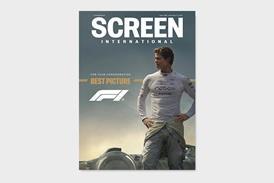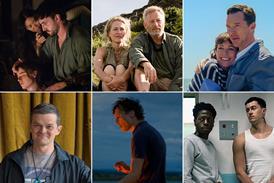Shaunak Sen explores the relationship between humans and the natural world in a film about two brothers rescuing birds in polluted New Delhi. The director of All That Breathes talks to Screen.

Animals have had a bit of a moment in the filmmaking spotlight — both fiction and non-fiction — of late. From Andrea Arnold’s Cow to Jerzy Skolimowski’s EO via Viktor Kossakovsky’s Gunda, the plights of our non-human neighbours have made for heartbreaking and compelling films. All That Breathes joins that roster having won prizes at festivals including Sundance and Cannes, and making both the 15-strong feature documentary Oscar shortlist and the Bafta longlist of 10 titles.
The second documentary feature from Indian filmmaker Shaunak Sen, All That Breathes is a study of Muslim brothers Nadeem and Saud who, with scant resources and aided by their young cousin Salik, rescue and rehabilitate injured black kites. They have saved more than 20,000 birds to date from a makeshift hospital housed in the basement of their home in a working-class New Delhi neighbourhood. While the worsening pollution makes the air thick with smog and causes the birds to fall from the sky, there is another threat looming as the Hindu Indian government seeks to pass laws that will discriminate against the country’s Muslim minority.
Sen’s first film, 2015’s Cities Of Sleep, examined New Delhi through its homeless population’s search for somewhere to sleep. All That Breathes is produced by India’s Kiterabbit Films and the UK’s Rise Films, in collaboration with US-based HHMI Tangled Bank Studios, and shot from 2019 to late 2021. It is part environmental wake-up call, part philosophical exploration of the interaction between humans and the natural world, and part intimate study of the two brothers’ relationship while their lives are increasingly threatened by social upheaval.
“I wanted to make a film about the tonal quality of living in this air and something that would make the bird itself a kind of contemplative character,” says Sen. “Once I met the brothers, the inherent cinematic-ness of how they live [made them the right subject]. They are very philosophical and I am also philosophically driven, and that inaugurates the space between us where they become more meditative and I draw the meditative out of them.”
Mindful of the ethical compunctions of non-fiction filmmaking, Sen and his team were careful to keep the brothers involved at every stage, both during the shoot and afterwards. This meant ongoing conversations during the three-year production process, having the pair represent the film during its worldwide festival journey and sharing the prize money. “Those things together form a kind of hygiene toolkit, which one has to keep adhering to and polishing actively,” says the director.
His approach paid off, with the human protagonists coming across as naturally as the bird ones, but this authenticity took some time to capture — especially since the pair became “quite media savvy”, having done their share of interviews following a piece about them in The New York Times in 2020.
“You have to reach a level where the brothers forget about the cameras, it’s about that sweet spot,” says Sen. “The idea was to break them out of the talking head mode. The footage was useless in the initial parts because they were too self-conscious. [You have] to arrive at a point where they get bored; boredom goes a long way to helping you find material that has a quality of truth. You have to [witness] the first yawn because that’s when you know they are bored enough for the camera’s presence to not be obtrusive.”
That first yawn came just before a poignant conversation between the brothers about their personal ambitions and the tensions it creates: Saud is happy to continue his work in New Delhi but Nadeem feels suffocated and has ambitions to travel and broaden his horizons.
“I never thought I would get [that],” says Sen. “It’s a searingly true moment and it only happened after three years!”
One of the most striking aspects of the film is its dreamy visual language, not just of the flocks of birds circling in grey skies or the extreme close-ups of kites in the workshop, but shifting from foreground shots of animals crawling over rubbish dumps to rioters burning cars in the background, or mosquitoes skating on a puddle that reflects an aeroplane overhead. For the look, the director was inspired in particular by documentary filmmakers Kossakovsky (Gunda, Aquarela) and duo Michael Dweck and Gregory Kershaw (The Truffle Hunters). Indeed, Aquarela cinematographer Ben Bernhard and The Truffle Hunters editor Charlotte Munch Bengtsen both worked on All That Breathes.
“Philosophically the whole film is about the relationship between the foreground and the background, which is a metaphor for the relationship between human and non-human,” says Sen, who shot around 300 hours of footage for the film. “It’s about not treating the human as an absolute reference point but enlarging your perspective to include non-human companions.
“There’s a constant waxing and waning of the non-human aspect of the city and it gets encapsulated shifting focus from foreground to background,” adds Sen. “The grammar itself becomes symptomatic of the entanglement of different living forms. The idea was to find a grammar that allowed you to understand the main thematic underwriting the whole film, ie the kinship between humans and non-humans.”
The fact Sen did not have a background in nature filmmaking was an advantage when it came to the visual style. As well as the shifting focus, he employs slow horizontal pans, gliding between the rooms in the brothers’ workshop, often with the characters drifting in and out of shot. “It was never the ambition to make a traditional nature doc,” notes Sen. “The idea was to find a poetic cinematic form to articulate the broader conceptual scaffolding of the film. If you start with three minutes of rats [scurrying around a car park], you are already militating against the usual tropes of animal shooting. That’s why we homed in on these slow, languorous takes.”
Flight of fancy

With two features under his belt, Sen is now marinating ideas for his next project, although the success of All That Breathes — which sold worldwide TV rights to HBO Documentary Films last May — has meant little time to formulate anything precise. He is not ruling out a fiction film, even though he has made his name with documentaries.
“I was scared of the behemoth that is the Bombay film industry and didn’t know if the films I love would find a ready home there, especially as a first film,” says Sen. “You stumble into non-fiction filmmaking because it’s more hospitable to a smaller-scale and more personalised kind of filmmaking. And yes, cheaper. Nonfiction is a more radical embrace of the unscriptedness of the world that can be mobilised for homegrown, personalised forms of filmmaking.”
When it comes to All That Breathes’ wider ambitions in terms of audiences, Sen is reluctant to make judgments about which themes should be the focus. “My favourite films are ones that are dense enough so they don’t have a single takeaway and are more like springboards,” he says. “What the brothers do is singular and teaches us something about what it means to be alive and do actual work of compassion.
“They do an exemplary form of radical kindness,” he continues. “It gives a philosophical disposition to deal with climate change that is not all about doom and gloom or despair, but a kind of wry resilience and grumpy kindness that the brothers have and I really like.”
























No comments yet